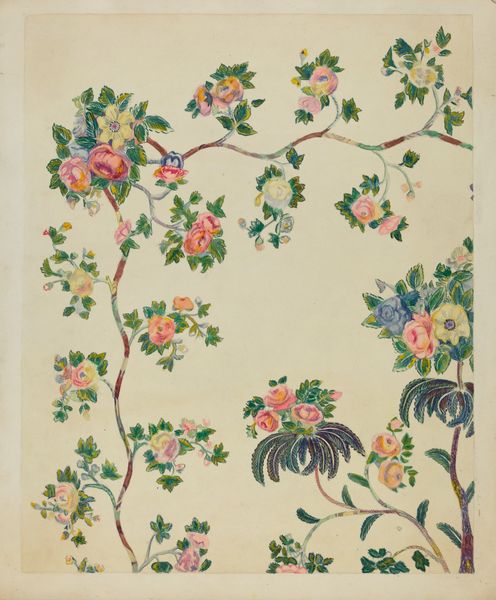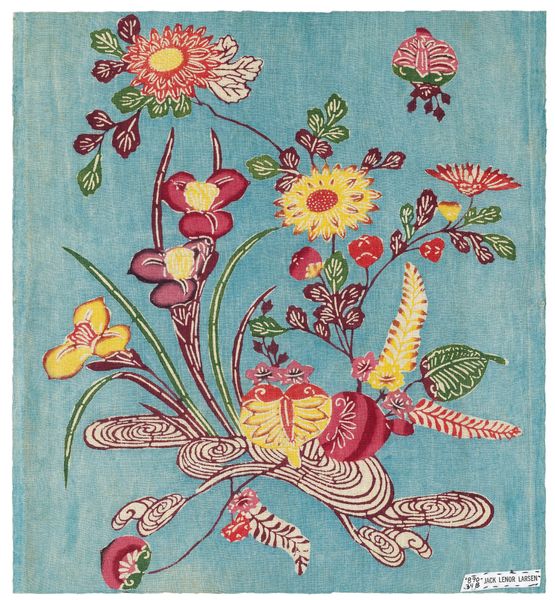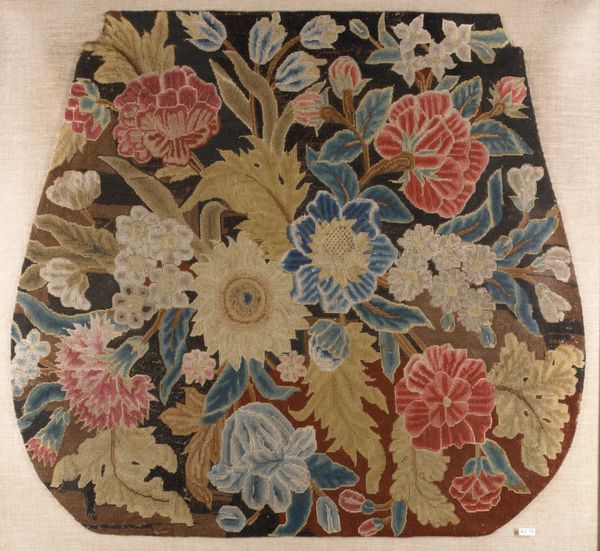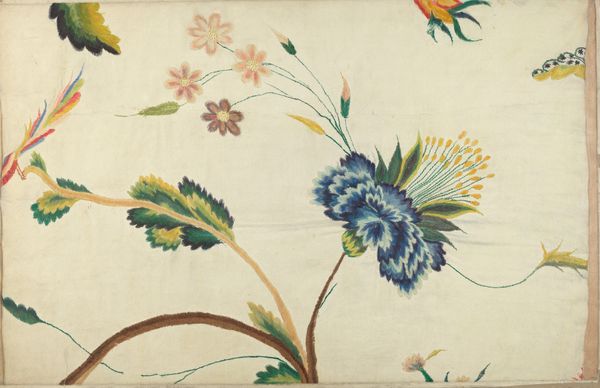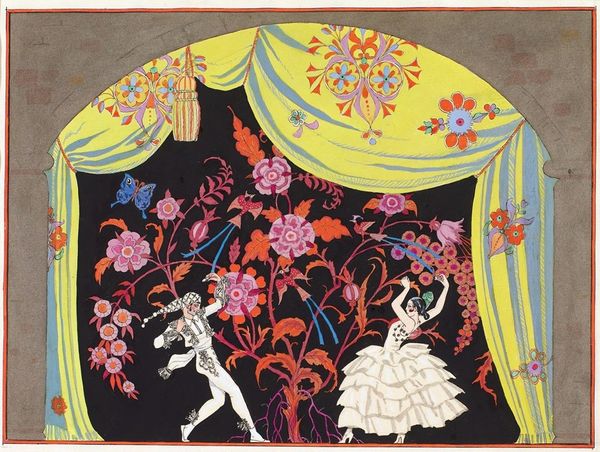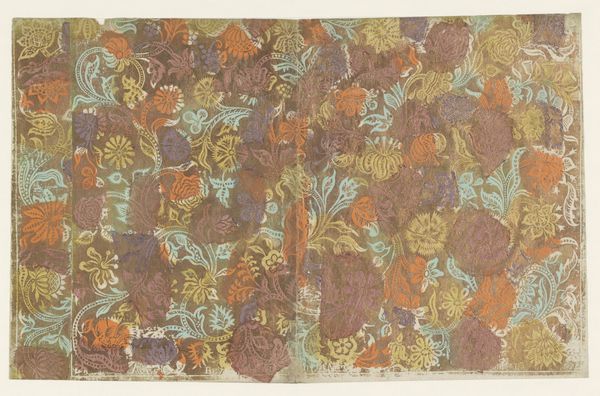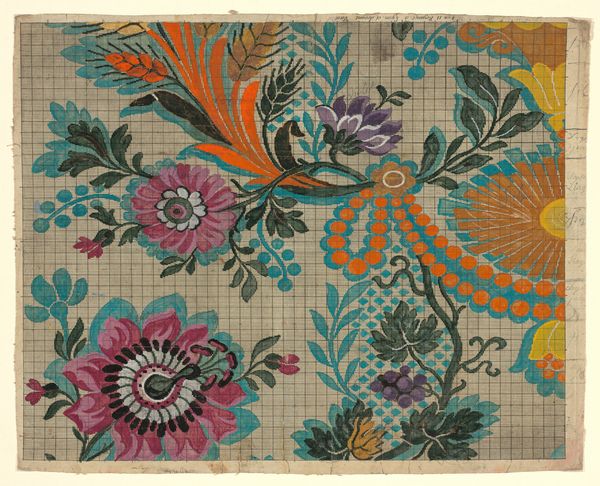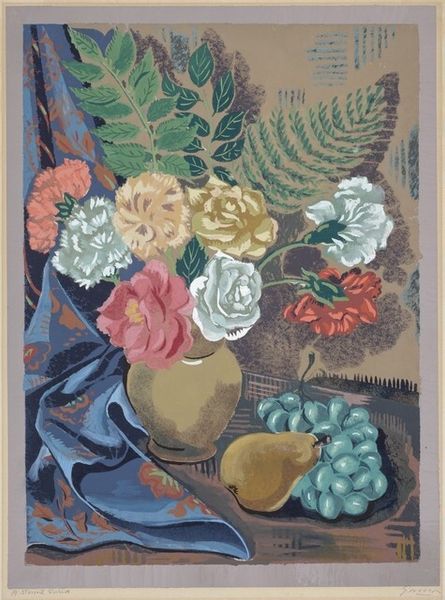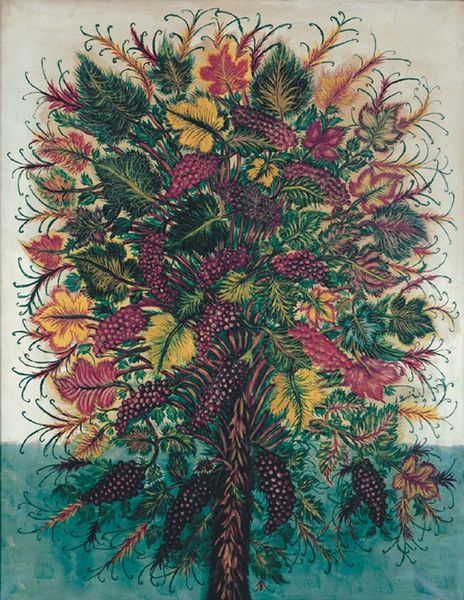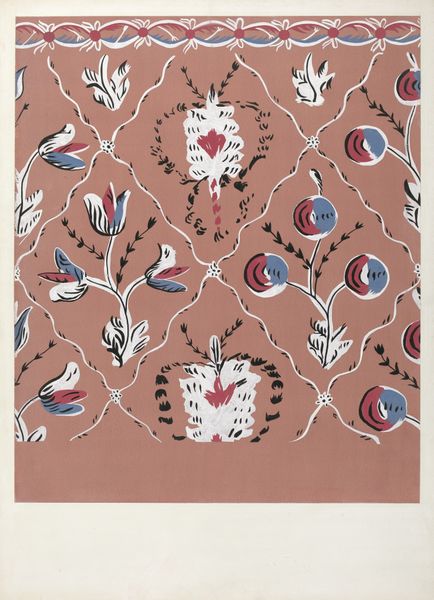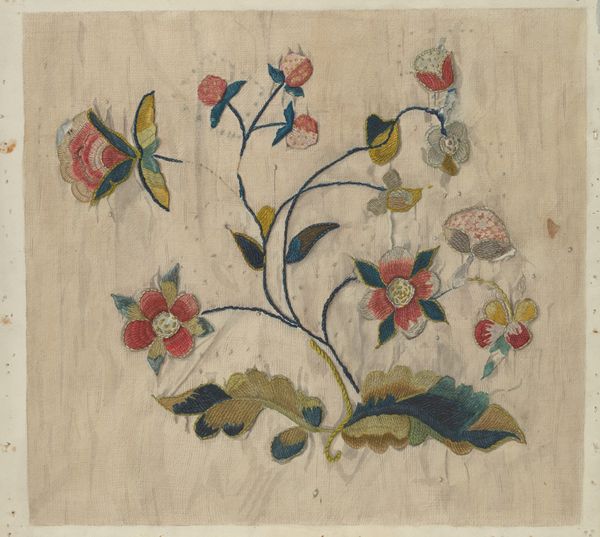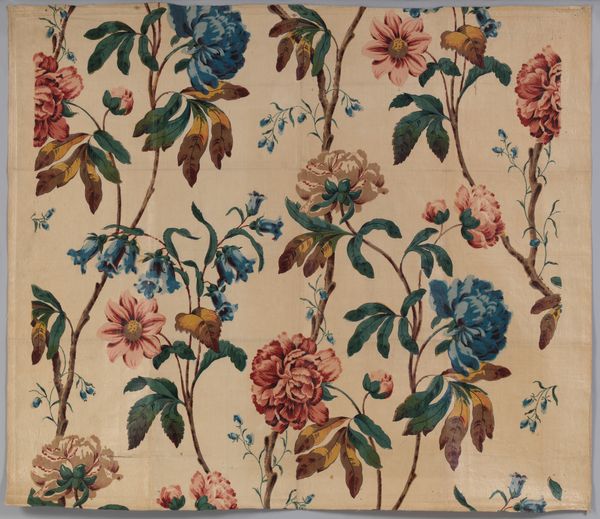
Wrapping cloth (uchikui) with directional floral design c. 19th century
0:00
0:00
textile
#
naturalistic pattern
#
organic
#
pattern
#
asian-art
#
textile
#
japan
#
geometric pattern
#
pattern background
#
abstract pattern
#
ethnic pattern
#
organic pattern
#
flower pattern
#
pattern repetition
#
decorative-art
#
layered pattern
#
combined pattern
Dimensions: 57 1/2 × 63 in. (146.05 × 160.02 cm) (overall)
Copyright: Public Domain
Here is a wrapping cloth with a directional floral design created by an anonymous artist. These cloths, known as "uchikui" in Japanese, were essential components of a bride's trousseau, embodying the hopes and dreams for a prosperous future. This textile’s creation and reception reflect a complex interplay of gender roles and social expectations. Crafted by women, uchikui cloths were not merely decorative; they were symbolic carriers of cultural values and familial status. The vibrant floral motifs might represent a visual language through which women expressed their identities, aspirations, and perhaps even subtle critiques of their prescribed roles. The act of wrapping itself suggests protection and preservation, mirroring the bride's transition into a new phase of life. In this sense, the uchikui cloth transcends its material form, becoming a profound statement about the emotional and societal dimensions of marriage.
Comments
minneapolisinstituteofart almost 2 years ago
⋮
Uchikui, like furoshiki on mainland Japan, are heavy cloths used for wrapping gifts and other goods. Typical for uchikui, polychromatic designs—in this case of chrysanthemums, peonies, and other florals surrounding a rocky outcrop—are set against a dark indigo ground. Three panels of plain-weave, heavy-grade ramie, a fabric made from the fibers of nettle plants, were joined together. Largescale uchikui woven from stiff and strong fibers were often used to cover furniture or other large household items.
Join the conversation
Join millions of artists and users on Artera today and experience the ultimate creative platform.
